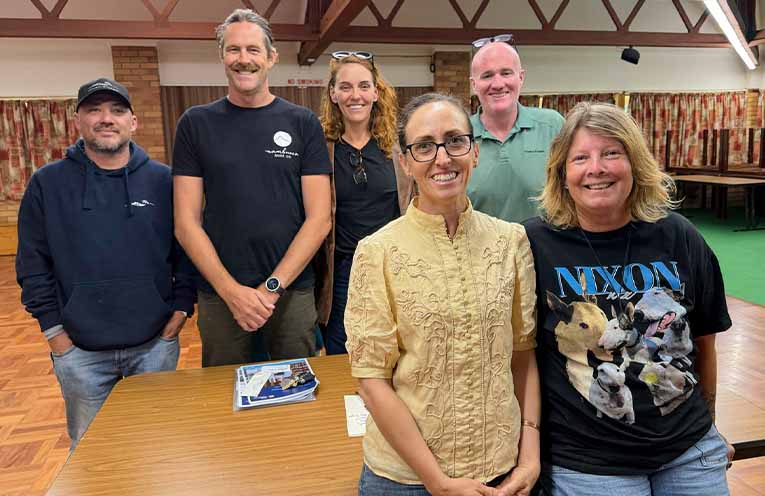AS Small Business Month draws to a close, Nambucca Valley Council is celebrating the strong response from local businesses to its free October events, with business continuity planning emerging as the most in-demand topic.
Council General Manager Bede Spannagle said the sessions were designed to equip small business owners with tools to become more resilient, especially in the face of natural disasters.
“Natural disasters will happen again, so it’s good to see local small business owners being proactive and seeking to be better prepared for the impacts of natural disaster,” Mr Spannagle told News Of The Area.
“Part of Council’s Economic Development and Tourism Strategy is supporting local businesses to be resilient and engaged. “I’m proud we were able to provide useful events throughout October to support this goal.”
The popular business continuity workshop was held on Tuesday 28 October and led by local business owner and experienced facilitator Julie Humphris.
Ms Humphris reminded attendees that eligible small businesses affected by this year’s extreme weather events can still apply for a recovery grant of up to $25,000 but the deadline is 11 December 2025.
“Thinking about your business preparedness or continuity is essential and it is more involved than your personal safety plan,” Ms Humphris told participants.
“It encompasses your assets, business finances, insurance, premises, stock, staff potentially and their mental health, and communications.
“I’d encourage any small business owner impacted by the east coast low in May or ex-tropical cyclone Alfred in March to reach out to a NSW Business Bureau team member and see if you are eligible for assistance.”
Workshop attendees were guided through five key steps to prepare their businesses for future disasters:
1. Know your risk: identify the disasters that might face your business. If you’re new to the area, you can chat to neighbouring businesses, chambers of commerce or Council about past disasters.
2. Plan for what you will do: make an emergency action plan for what you will do in a disaster. If you have a business partner or staff, talk about it.
3. Get your business ready: there are some practical and easy actions you can take now to prepare your business and plan for business continuity. While appropriate actions will depend on a business’ individual circumstances, it could be backing up all of your digital information to the Cloud or an external hard drive, stored elsewhere, and having your business assets photographed and their maintenance schedule recorded.
4. Be aware: if a disaster does strike, knowing where to look for up-to-date information. Consider downloading the Hazards Near Me app.
5. Look out for each other: neighbouring businesses can be one of the best sources of information and help before, during and after a disaster. Develop connections with local businesses and commit to helping one another.
Small businesses and primary producers impacted by disaster AGRN 1212 (May floods) or AGRN 1198 (Cyclone Alfred in March) have until 11 December 2025 to apply for available support, which includes concessional loans, transport subsidies and grants.
Further information on NSW Government Recovery Support Services can be found at nsw.gov.au/emergency/floods/recover/support-services or by calling 13 77 88.
For local support, business owners are encouraged to stay connected with Nambucca Valley Council and keep an eye out for upcoming workshops and events aimed at strengthening economic resilience.
By Mick BIRTLES
You can help your local paper.
Make a small once-off, or (if you can) a regular donation.
We are an independent family owned business and our newspapers are free to collect and our news stories are free online.
Help support us into the future.




